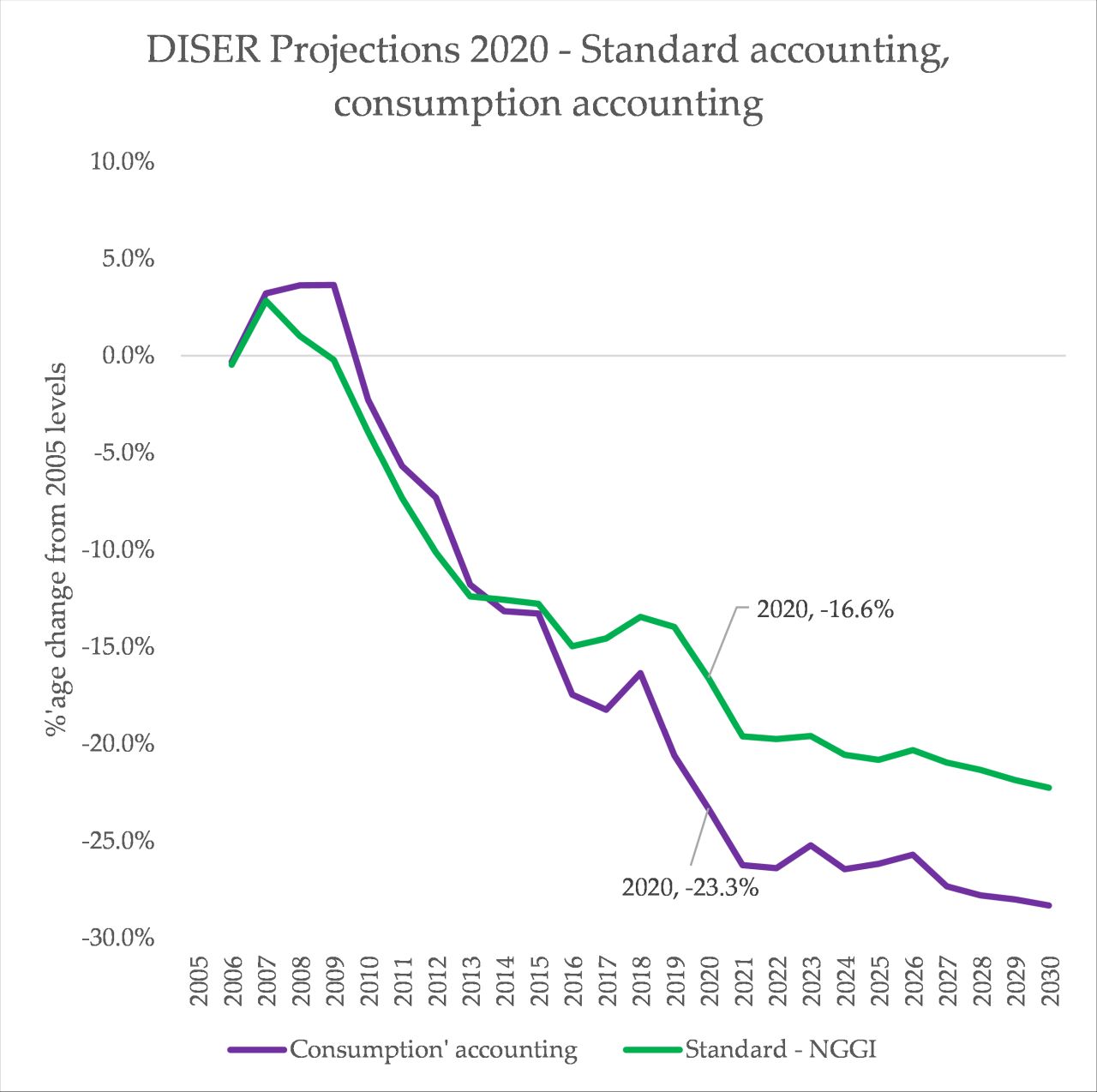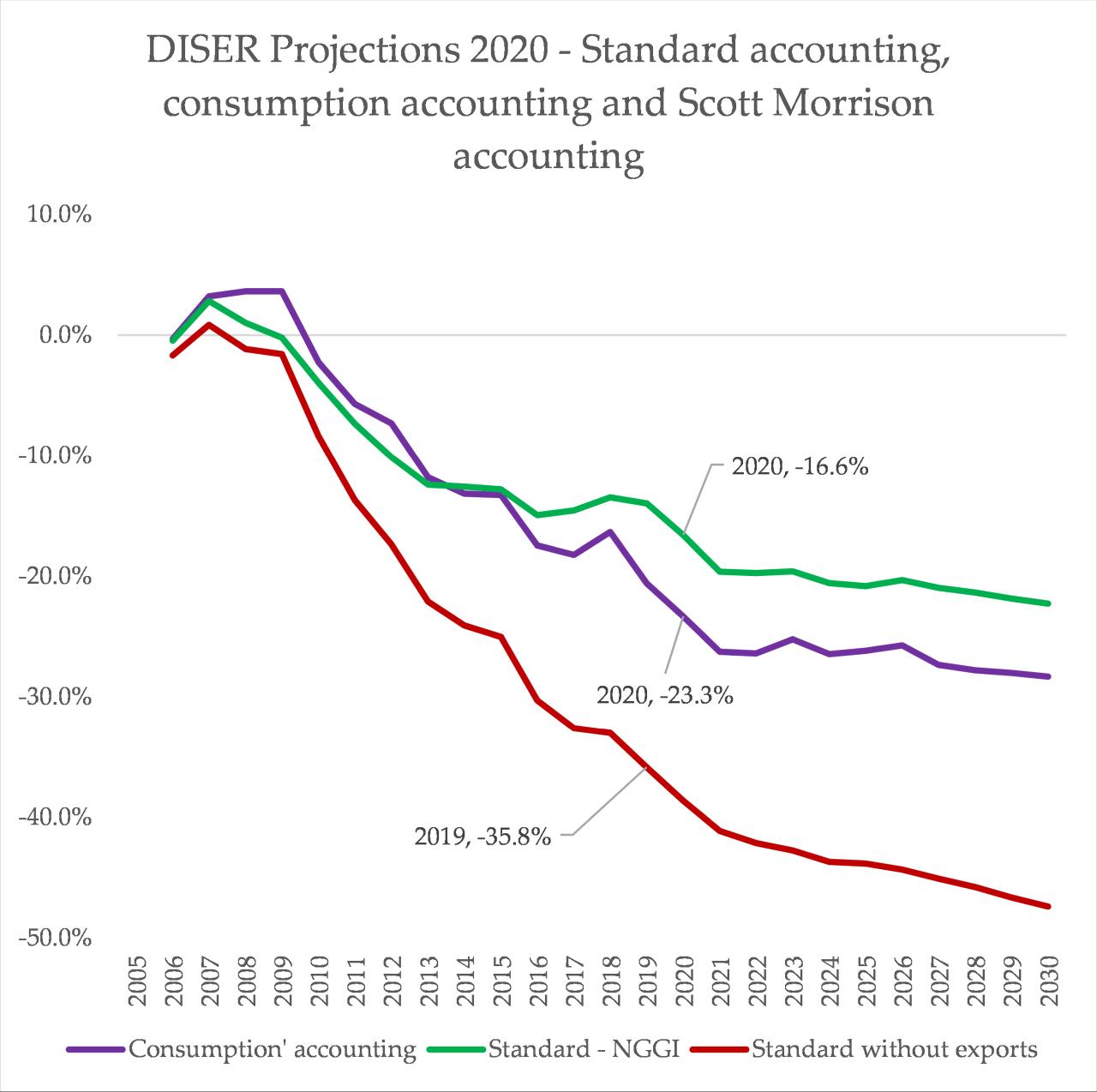Scott Morrison’s time slot opened with a Zoom stuff-up of significant scale. There had been hiccups for previous speakers – random dial pad tones and echoing voices. But Scott Morrison copped it the worst of all, with a horror sixty seconds of dead air as he first stared blankly into his webcam, and then began his contribution despite the audio still not working. How can anyone resist the metaphor? Morrison’s contribution was equally meaningful with and without audio.
Japan, Canada and the US announced updates to their 2030 climate targets. Korea promised to end overseas coal financing, and China has promised to peak coal usage by 2025. Australia, meanwhile, announced, very literally, nothing new.
Australia’s current state of climate action falls within two categories. The first is thimbles of cash poured into whichever technology has a zero percent probability of impacting the revenue streams of fossil fuel operations, at least not prior to the retirement age of current executives and politicians. That’s fossil hydrogen and CCS.
The second category is also a dense bush of confusion and misdirection. It involves twisting the numbers tracking and targeting climate action to artificially manufacture emissions reductions where there are none. And in the tiny space of time that Morrison was audible, he crammed in a lot.
The first was representing Australia’s emissions as proportions of either population or GDP, instead of absolute values. That’s because if population or GDP rise, and emissions stagnate, the numbers still look like they’re falling. Morrison has been twisting emissions values into so many different versions he got tangled over his own words, saying that “achieving our 2030 targets will see emissions per capita fall by almost half of our emissions per unit……ah, by of GDP by 70%”.
The sheer density of deceptions in the speech were exhausting. “Already we’ve reduced our emissions by 19% on 2005 levels” – the only dataset I know of that estimates 2020’s total emissions is the December 2020 department emissions projections, and that definitively says it’s 16.6%. “More than most other similar economies” – I debunked that one yesterday. Australia’s greenhouse gas emissions, excluding the controversial land use sector accounts, are rising far faster than every country Morrison and Taylor used for comparison.
The new deception that’s far worse than we thought
Morrison finished with “..and by 36% when you exclude exports”. Wait, what? “Exclude exports?” This one had every climate and energy expert scratching their heads. Eventually, it emerged that Morrison means that for any fossil fuel exported, the emissions created in Australia in the process of digging up and transporting it are applied to the destination country. Inversely, in this “consumption” based accounting, Australia bears the burden of emissions in the production of goods it imports – eg a laptop made in China and sent to Australia.
This methodology is very much favoured by any country that sends extremely emissions intensive things overseas, but doesn’t import much emissions intensive stuff. Tellingly, the Department of Industry, Science, Energy and Resources made a clear point of adding a ‘consumption based accounting’ section to its 2020 emissions projections report. What seemed like a thought experiment at the time turns out to be the groundwork for a deceptive new way of ‘reducing emissions’.
Here’s the thing: it is so, so much worse than that. Let me explain. The emissions projections explain ‘consumption’ account like this:
“This accounting approach excludes emissions generated during the production of exports, but also includes overseas emissions generated during production of the products that are imported for domestic consumption”
I know, it’s confusing. It’s a blatant fudge to massage the emissions of a major fossil exporter, and it also ignores the fact that fossil fuels release emissions when used – not quite the same as a laptop imported from China.
But I converted the ‘consumption’ based emissions (remove export emissions but add import emissions) into a percentage change from 2005, and found that the percentage reduction was only 23% – a far cry from 36%.
So guess what? Morrison’s eager staffers have departed from the suggestions of DISER. They’ve subtracted the emissions from exports, but in an act of stunning empirical deception, they’ve neglected to add back in the emissions from imports.
Which means Australia’s 2020 emissions go from 513 megatonnes in the standard method, to 423 in the ‘consumption’ method, to a measly 280 in Scott Morrison’s method. For some reason, he’s picked 2019 instead of 2020 (why? If we’re just making stuff up, go with the higher number?), and that is where the 36% figure comes from – by lopping off exported emissions but very pointedly and very, very, very deceptively not adding back in imported emissions:
Using the Morrison Method, emissions will drop to nearly 50% of 2005 levels by 2030. Anyone selling stuff to Australia puts the emissions from making that stuff on their books, and anyone buying stuff from Australia also puts the emissions from that stuff on their books. It’s utter ridiculousness, it’s wildly deceptive, but Australia’s Prime Minister wrapped it in a smug bow and presented it to the world.
It’s part of a long tradition of reducing emissions not by reducing emissions, but by twisting spreadsheets into compliance. The Kyoto ‘carryover’ debacle, in which Australia spent COP25 aggressively fighting to allow “overperformance” on previous climate targets to count towards Paris was unceremoniously dropped when projections showed renewable energy would help meet the target.
Who benefits?
What is the point of pretending that Australia is reducing emissions, when it is not? A collection of the country’s worst climate polluters have a specific vested interest in easing scrutiny of emissions and erasing any prospect of actual climate action.
Morrison helpfully listed some key players during the speech: “Fortescue, Visy, BHP, Rio Tinto and AGL”. Excluding Visy, who don’t appear on emissions accounts, these corporations are responsible for 66 megatonnes CO2-e in 2019-20, out of 411 in total, of corporate emissions in Australia. 16% of total emissions. Morrison’s climate-inaction technologies, alongside his statistics-twisting reaching stunning new heights, were not meant for an international audience – they were meant for these companies. And he spoke to them directly.
“You can always be sure that the commitments Australia makes to reduce greenhouse gas emissions are bankable. Future generations, will thank us not for what we promise, but what we deliver”.
“Bankable” seems like an appropriate choice of words here. And what Scott Morrison is delivering, through exponentially embarrassing and shameless greenwashing of climate action, is an Australia that remains a safe haven for the planet’s worst polluters. Welcome to the Morrison Method.













